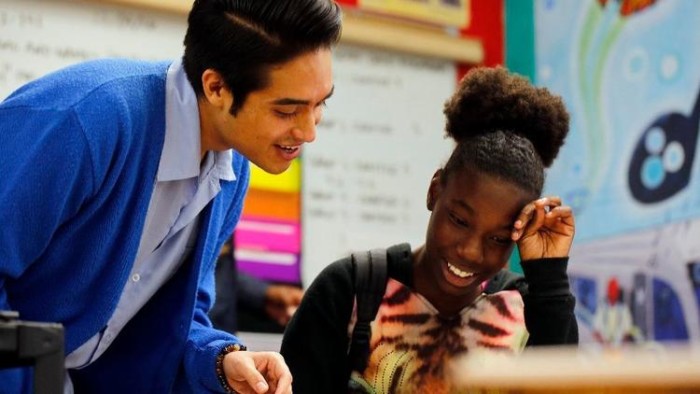
The University of California received more than 171,000 freshman applications for fall 2017, marking a new record with gains across all racial and ethnic groups.
The applicants included more than 111,600 California high school seniors, a 6% rise over last year, according to prelimary UC data released Monday. Overall, the top campus choice was UCLA, followed by UC San Diego, UC Irvine, UC Berkeley and UC Santa Barbara.
The record number of in-state applicants will help UC meet its pledge to enroll an additional 2,500 Californians next fall, said UC President Janet Napolitano. In response to public criticism over UC’s rising out-of-state enrollment, Napolitano in 2015 forged a three-year deal with Gov. Jerry Brown and the Legislature to add a total of 10,000 more Californians to the system by 2018.
“This year’s applications affirm, once again, that Californians’ demand for a UC education keeps getting stronger,” Napolitano said in a statement. “This is a testament to the excellence of California’s public research university, and reinforces the imperative to continue working with our state government to preserve UC’s quality and affordability, and to ensure there is a place at the university for every deserving California student.”
UC officials say they hope to enroll more Californians by 2018 than pledged in the deal with Sacramento. The university already is on track to surpass 10,000, having enrolled 7,500 more Californians this fall across all campuses. Officials hope to get enough state funding to add another 5,000 students over the next two academic years, said UC spokeswoman Dianne Klein.
Assemblyman Kevin McCarty, (D-Sacramento), called the enrollment numbers “great news for California students and for California’s long-term economic health.” But McCarty said that, as chairman of the Assembly budget subcommittee on education finance, he would continue to push for a cap on non-resident enrollment and expanded access for Californians.
In an interview, McCarty said he supported a 20% cap on non-residents. That’s higher than the system’s overall level of 16.5%, but the share of non-resident students varies widely by campus — with about 24% at UC Berkeley, for instance, and 3% at UC Riverside.
The rising demand for seats comes as UC considers the first tuition increase in six years to help pay for needs including more faculty, classrooms and labs at a time when state support is at lower levels than a decade ago. The proposed increase — which could amount to $280 annually — has been opposed by students and will be debated at the UC Board of Regents meeting in January.
McCarty said a small increase was “reasonable” and that his committee would hold hearings early next year to discuss ways to expand financial aid in order to cover not only tuition but also housing and other expenses.
“The biggest issue we have is access and affordability,” he said.
Overall, UC applicants reflected the state’s diversity. Asian Americans, however, make up a disproportionately large share of the applicant pool. They were 13% of last year’s California high school graduates but are 29.1% of UC applicants for next fall.
In the latest data, Latinos recorded the strongest gains, with 41,575 applications to UC’s nine undergraduate campuses. They made up 37.2% of total applicants, followed by Asian Americans at 29.1%, whites at 23.7% and African Americans at 6.2%.
Asian Americans were the largest applicant group at UC’s most competitive campuses, including UCLA, UC Berkeley and UC San Diego. African Americans, whose numbers dropped the most dramatically following the ban on affirmative action imposed by Proposition 209 two decades ago, posted increases at all campuses.
California applicants to UC Merced jumped 10.1%, the largest campus increase. Chancellor Dorothy Leland said the growth in applications reflected greater recognition of the recent gains made at the school, the system’s youngest and smallest campus, located in the impoverished San Joaquin Valley. UC Merced recently broke ground on a major expansion and made U.S. News & World Report’s list of best national universities for the first time.
“It’s extremely rewarding to see our campus continue to attract a record number of qualified students for admission,” Leland said in a statement. “We believe the numbers are reflective of the strides we’re making in research and innovation, and the transformative educational opportunities we offer our students.”
Across the UC system, applications increased from last year’s tally of 166,380. More low-income students and those who would be the first in their families to attend college applied this year, but applications decreased slightly for students from other states and foreign countries.
By: Teresa Watanabe
Twitter: @teresawatanabe
Source publication: Los Angeles Times